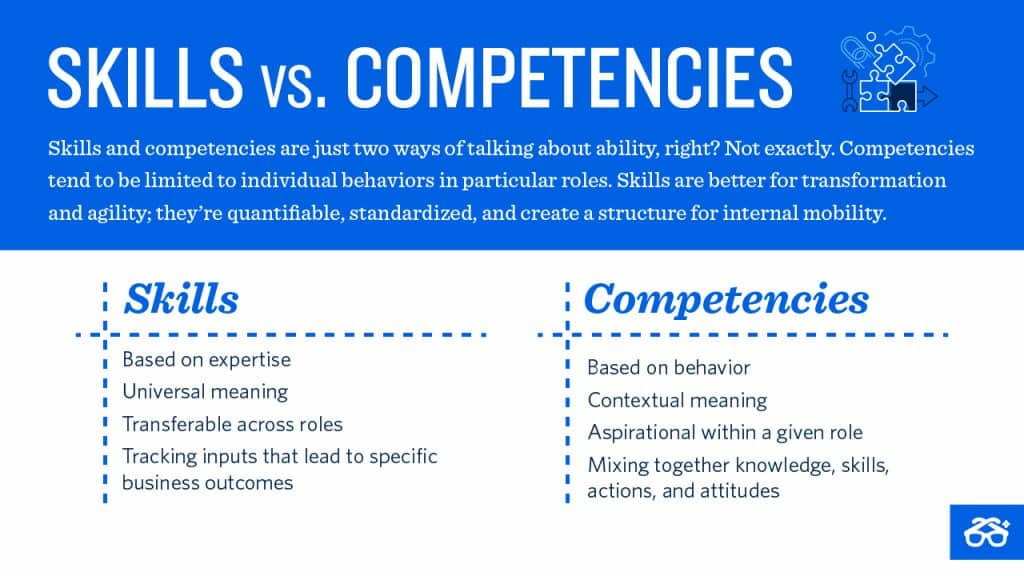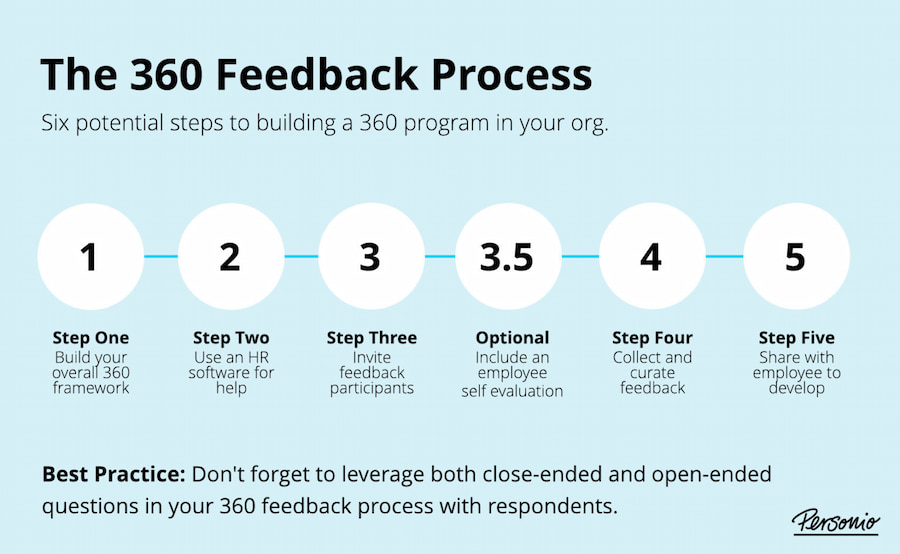Competency assessments are vital in understanding and improving employee skills and performance in today’s competitive work environment. Organizations can better align their workforce with business goals and enhance overall productivity by evaluating key competencies—such as technical abilities, interpersonal skills, and problem-solving capabilities. Competency assessment goes beyond traditional performance reviews; they provide deeper insights into individual strengths, skill gaps, and growth potential.
This article explores what competency assessments are, why they matter, and the methods used to carry them out effectively. From identifying core competencies to implementing a robust assessment program, we’ll look at the best strategies to develop a skilled and agile workforce equipped to meet today’s challenges.
What Is Competency Assessment?
Competency assessment is a systematic approach to evaluating whether employees have the necessary skills, knowledge, and behaviors required for their roles. By identifying and measuring competencies, organizations ensure their workforce can perform tasks effectively and meet professional standards.
Employee competency assessment involves evaluating an individual’s abilities across various competencies—defined as the combination of skills, knowledge, attitudes, and behaviors necessary for effective performance in a particular job or industry.
This assessment can identify both strengths and areas needing development, which can guide personal and professional growth within an organization.
Competency assessment vs. Performance evaluation
While they may seem similar, competency assessment and performance evaluation serve different purposes:
- 🤔 Competency assessment focuses on potential and preparedness. It evaluates whether individuals have the required competencies for their roles, which can indicate future success and readiness for new responsibilities.
- 📈 Performance evaluation, on the other hand, examines an employee’s current output and results within their role. It’s often used to measure job performance based on set goals, rather than the underlying competencies needed to achieve them.
Together, these assessments provide a more comprehensive view of an employee’s effectiveness and growth potential.
Types of competencies
Competency assessments often evaluate several types of competencies:
- ⚙️ Technical competencies: These are job-specific skills and knowledge. For example, a software developer’s technical competencies might include coding, debugging, and familiarity with development frameworks.
- 🌱 Behavioral competencies: These competencies cover personal qualities and attitudes, like adaptability, resilience, and dependability. Behavioral competencies are essential for managing challenges and achieving personal and team goals.
- 🤝 Interpersonal competencies: These focus on communication, collaboration, and relationship-building skills. Interpersonal competencies are especially crucial in roles that require teamwork and client interaction.
Skills vs. competency
It’s important to clarify the difference between skills and competency:
- 🛠️ Skills are specific, teachable abilities, such as writing, coding, or using a particular software. Skills can be easily measured, and they’re often learned through training or experience.
- 🌟 Competency, however, is a broader concept that includes how well a person uses these skills in real-world scenarios, integrating other qualities like judgment, attitude, and adaptability. Competency is about effectively applying skills in a way that achieves desired outcomes in a work environment.

In summary, while skills represent what a person can do, competency reflects how they do it and whether they can leverage those skills effectively in their role.
Why Competency Assessment Is Important
Competency assessment plays a crucial role in workforce management (along with workforce management software) by ensuring employees are well-equipped to meet job requirements. Here are some key reasons competency assessment is essential:
- 🕵️ Identifies skill gaps: Competency assessment helps identify skill gaps within an organization, enabling businesses to address areas where employees may need further training or development. This leads to targeted development programs that improve overall performance.
- 📋 Informs recruitment and hiring: Competency assessments ensure that employers select candidates who possess the necessary competencies for the job, resulting in better job performance and a more efficient hiring process.
- 📚 Enhances employee development: By identifying strengths and weaknesses, competency assessments guide the creation of personalized performance improvement plans, supporting employee growth and fostering engagement and retention.
- 📊 Supports performance management: Competency assessments offer valuable data for tracking employee progress, which can inform performance reviews, promotions, and career planning, helping businesses make data-driven decisions.
- 🌟 Drives organizational growth: Regular competency assessments ensure that companies have the skilled workforce they need for future growth, helping align employee capabilities with the organization’s long-term goals.
Benefits and Challenges of Competency Assessments in Hiring
Benefits
- 🎯 Improved hiring accuracy: Competency assessments allow employers to better match candidates to job roles based on their actual capabilities. This helps reduce the risk of hiring someone who might not perform well or fit the organizational culture. With clear insights into a candidate’s skills, employers can make more informed decisions that lead to higher employee retention.
- ⚖️ Objective evaluation: By using standardized assessment tools, competency assessments provide an objective way to evaluate candidates, removing biases that can influence hiring decisions. This promotes fairness, ensuring that candidates are evaluated based on their abilities and not influenced by factors like personal relationships or unconscious biases.
- 🚀 Identifies growth potential: In addition to evaluating current competencies, these assessments can help employers recognize candidates who have the potential for growth and development. This forward-thinking approach supports long-term workforce planning, ensuring employees can grow within the company.
- 💪 Better cultural fit: Competency assessments can also help in evaluating whether a candidate’s skills and behaviors align with the company’s culture and values. By assessing behavioral competencies alongside technical skills, employers can better ensure new hires will integrate smoothly into their teams.
Challenges
- 😰 Over-reliance on assessments: One challenge with competency assessments is the possibility of over-relying on them. While assessments can provide valuable data, they should not be the sole determining factor in the hiring process. It’s important to combine assessments with interviews, reference checks, and other methods for a more complete picture of a candidate’s suitability.
- ⏳ Cost and time investment: Developing, administering, and analyzing competency assessments can be resource-intensive, especially for smaller businesses with limited budgets. Additionally, the time spent creating and reviewing these assessments might slow down the hiring process, potentially leading to delays in filling key positions.
- 😬 Candidate anxiety: Some candidates may feel stressed or anxious during competency assessments, especially if the process feels overly formal or high-stakes. This can affect their performance and may not accurately reflect their true abilities, potentially leading to an unfair evaluation.
- 🔍 Limited scope of assessment: While competency assessments are valuable for evaluating specific skills, they may not capture all aspects of a candidate’s abilities or potential. For instance, they might miss softer skills like emotional intelligence or the ability to handle ambiguity, which can be equally important for success in certain roles.
8 Common Methods of Competency Assessment
A competency test can take several forms, and choosing the right method depends on the specific competencies you aim to evaluate and the job requirements. Below are 8 common methods used by organizations to assess competencies in candidates or employees:
Interviews
Structured and semi-structured interviews are commonly used to assess candidates’ competencies. These interviews allow employers to ask specific questions that evaluate technical, behavioral, and interpersonal skills. In competency-based interviews, candidates are often asked to provide examples from past experiences to demonstrate how they’ve applied these skills in real-world situations.

Structured interviews follow a consistent set of questions for all candidates, ensuring fair evaluation based on predefined competencies. Semi-structured interviews offer flexibility, allowing interviewers to explore answers more deeply with follow-up questions, which is especially useful for assessing softer skills like expert power or adaptability.
Psychometric tests
These competency assessment tests are designed to measure a candidate’s cognitive abilities, personality traits, and behavioral tendencies. Psychometric competency testing is often used to assess problem-solving skills, emotional intelligence, and cultural fit. These tests can provide objective data on a candidate’s potential and how well they might perform in a role.
Skills testing
Skills testing involves giving candidates practical exercises or simulations to demonstrate their abilities in real-world scenarios. These tests are designed to mirror the specific tasks and responsibilities the candidate will face in the role. For example, a developer might be given a coding problem to solve, while a content creator might be asked to write an article or blog post on a given topic. For customer service roles, candidates might participate in role-playing exercises to assess their communication and problem-solving skills in a simulated customer interaction.
The primary advantage of skills testing is that it allows employers to directly observe how candidates perform, providing insights into their competence beyond what is stated on their resumes. By replicating on-the-job challenges, employers can evaluate how well candidates apply their knowledge in a practical context, assessing both technical proficiency and their approach to problem-solving under pressure.
360-degree feedback

This method gathers feedback from multiple sources, including peers, subordinates, and supervisors. It’s often used to assess behavioral and interpersonal competencies, providing a holistic view of an employee’s strengths and areas for improvement. 360-degree feedback can be particularly effective in assessing leadership and teamwork skills.
Assessment centers
Assessment centers involve a series of exercises and simulations designed to mimic the job’s real-life challenges. Candidates are typically assessed on skills like leadership, problem-solving, communication, decision-making, and teamwork. The tasks are structured to simulate situations they might encounter in the role, giving evaluators a deeper understanding of how candidates would perform under pressure. For example, candidates may participate in group discussions, case studies, or role-playing scenarios where they have to solve problems, manage conflict, or lead a team. This approach helps reveal not only technical expertise but also soft skills like interpersonal abilities, decision-making processes, and adaptability. The diverse exercises allow assessors to measure multiple dimensions of a candidate’s competencies in a more dynamic, real-world context.
Job trials/Work samples
Job trials or work samples provide candidates with tasks that closely resemble the actual work they would be doing on the job. This hands-on method allows employers to assess not just theoretical knowledge but practical application of skills and problem-solving abilities. It’s especially valuable for technical or creative roles, where the ability to perform specific tasks is essential. For example, a developer might be asked to write code for a small project, a graphic designer could create a sample design, or a content writer may produce a short article to showcase their writing style and technique.

In addition, job trials provide a more accurate prediction of how a candidate will perform once hired. Employers can assess not just technical proficiency but also time management, creativity, and how well candidates handle job-specific scenarios. Given their direct nature, these assessments help both the employer and candidate make more informed decisions.
Self-assessment
Self-assessment is a method where employees or candidates reflect on their own skills and competencies by completing questionnaires or rating themselves on various criteria. This tool can be particularly helpful in understanding how individuals perceive their own abilities and identifying areas for self-improvement. By reviewing different competencies—such as technical skills, interpersonal abilities, and behavioral traits—individuals can get a sense of where they feel strong and where they may need further development.
While self-assessment can be subjective, it provides valuable insights into an individual’s self-perception and career development goals. It encourages introspection and personal accountability, helping employees understand their strengths and weaknesses from their own perspective. This method is often used alongside other assessment tools, such as manager evaluations or peer reviews, to provide a more holistic view of an individual’s competencies.
Behavioral assessments
Behavioral assessments focus on understanding how candidates react to various situations and whether they exhibit the behaviors required for success in a role. This type of assessment often involves scenario-based questions or role-playing exercises designed to simulate real-world challenges. It can be used to assess emotional intelligence, conflict resolution skills, and customer service abilities.
How to Implement a Competency Assessment Program
Implementing a competency assessment program is an essential step for organizations to align their workforce with strategic goals, enhance performance, and foster professional development. Here’s a step-by-step guide on how to effectively implement this program:
1️⃣ Define clear objectives and competencies
- Before you start, clearly define the purpose of your competency assessment program. Ask questions like: What goals are you hoping to achieve? Are you focusing on recruitment, professional development, or leadership growth?
- Identify the core competencies that will help achieve these objectives. These competencies can be technical skills, behavioral competencies, and soft skills relevant to your industry and the specific roles within your organization.
2️⃣ Design competency framework
- Create a competency framework that outlines the specific competencies required for each role within the organization. This framework should categorize competencies into technical, interpersonal, and behavioral categories.
- Make sure to align competencies with the organization’s values, mission, and strategic goals. For instance, if leadership is a core value, ensure that leadership competencies are part of the assessment framework.
3️⃣ Select the right assessment methods
- Choose the most appropriate assessment methods that align with the competencies you want to measure. Consider using a mix of methods like interviews, psychometric tests, work samples, and 360-degree feedback.
- For each competency, select an assessment tool that can provide an objective measurement. With technical skills, for example, you might use coding tests or problem-solving scenarios; for leadership abilities, you could use behavioral assessments or 360-degree feedback.
4️⃣ Develop assessment tools
- Once the methods are selected, develop the necessary tools or questionnaires for the assessments. This can include creating interview questions, designing psychometric tests, and setting up software for self-assessments or 360-degree feedback surveys.
- Ensure that all tools are standardized to avoid bias and ensure consistency across assessments. Make sure they are aligned with the competencies defined in your framework.
5️⃣ Train assessors and managers
- It’s essential to train all individuals involved in the competency assessment process, including hiring managers, team leaders, and HR professionals. Training ensures that assessments are conducted fairly, consistently, and accurately.
- Provide guidance on how to interpret results and give constructive feedback to candidates or employees.
6️⃣ Pilot the program
- Before rolling out the program organization-wide, conduct a pilot program with a small group of employees or candidates. This will allow you to identify any issues or gaps in the assessment process.
- Gather feedback from participants and assessors to refine and improve the process.
7️⃣ Implement and monitor
- After making necessary adjustments based on the pilot program, launch the competency assessment program for the entire organization.
- Continuously monitor the program to ensure that it is meeting the objectives and providing valuable insights. Collect feedback from assessors and participants to improve the program over time.
8️⃣ Review and improve
- Competency assessments should be reviewed periodically to ensure they remain relevant and aligned with evolving organizational goals and job requirements. Adapt the competency framework as necessary to reflect changes in industry trends, new technologies, and shifting priorities.
- Use the data collected from assessments to identify trends and areas for improvement in both individual and organizational performance.
Examples of Competency Assessment in Different Fields
Competency assessments are used across industries to measure and develop specific skills. Depending on the sector, different assessment methods and competencies are emphasized. Below are examples from several fields to demonstrate how competency assessments are applied:
1. Healthcare
❓ Competencies assessed: Clinical skills, patient communication, decision-making, empathy, teamwork, and professionalism.
💪 Methods used:
- Objective Structured Clinical Examinations (OSCEs): Simulated patient interactions to assess clinical skills.
- 360-degree feedback: Gathering feedback from peers, supervisors, and patients.
- Skills testing: Direct observation of technical procedures (e.g., surgery, diagnostics).
2. Technology and IT
❓ Competencies assessed: Technical proficiency, problem-solving, creativity, collaboration, and adaptability.
💪 Methods used:
- Coding tests: Platforms like HackerRank and Codility assess programming and problem-solving skills.
- Work samples: Candidates complete a real-world project to demonstrate their technical capabilities.
- Peer reviews: Feedback from colleagues on collaboration and project execution.
3. Education
❓ Competencies assessed: Pedagogical skills, communication, empathy, classroom management, and subject expertise.
💪 Methods used:
- Lesson observations: Evaluators assess teaching effectiveness through direct classroom observation.
- Self-assessments: Teachers reflect on their strengths and areas for improvement.
- Student feedback: Surveys and evaluations from students to assess teacher performance.
4. Finance
❓ Competencies assessed: Analytical thinking, financial modeling, attention to detail, ethics, and communication.
💪 Methods used:
- Case studies: Candidates solve complex financial problems, such as budgeting, forecasting, or investments.
- Behavioral interviews: Interview questions assess decision-making processes and problem-solving abilities.
- Technical assessments: Testing skills in financial analysis and software (e.g., Excel, SAP).
5. Customer Service
❓ Competencies assessed: Communication, empathy, problem-solving, conflict resolution, and patience.
💪 Methods used:
- Role-playing: Simulating customer interactions to assess how candidates handle complaints or inquiries.
- Customer feedback: Gathering data from customers about their service experience.
- Situational judgment tests: Presenting candidates with real-life scenarios to evaluate their responses.
6. Sales and marketing
❓ Competencies assessed: Persuasion, negotiation, strategic thinking, adaptability, and relationship management.
💪 Methods used:
- Sales simulations: Role-playing exercises where candidates demonstrate their sales techniques.
- Portfolio reviews: Reviewing past marketing campaigns or sales achievements.
- Behavioral interviews: Questions about past experiences in sales or marketing strategies.
7. Manufacturing
❓ Competencies assessed: Technical skills, safety awareness, problem-solving, teamwork, and equipment operation.
💪 Methods used:
- Practical testing: Hands-on assessment of machine operation or assembly line tasks.
- Safety drills: Evaluating how employees handle emergency situations or ensure safety protocols are followed.
- Competency checklists: Supervisors use checklists to evaluate ongoing skills in different operational areas.
Best Practices for Successful Competency Assessment
To effectively assess competencies and ensure that the process is both impactful and objective, it’s crucial to follow certain best practices. These practices not only help streamline the assessment process but also improve the reliability and validity of the results. Below are some key best practices for a successful competency assessment:
1. Define clear competencies
- Before initiating the assessment, clearly define the competencies that are critical to success in the role or function. These should be aligned with the organization’s goals and the specific requirements of each position.
- Best practice: Regularly update competencies to reflect changes in industry standards or company objectives.
2. Use multiple assessment methods
- Relying on a single method of assessment can limit the depth and accuracy of the results. Using a combination of assessments—such as skills tests, behavioral interviews, peer feedback, and self-assessments—provides a well-rounded view of an individual’s competencies.
- Best practice: Combine objective measures (e.g., tests, simulations) with subjective measures (e.g., interviews, peer reviews) to assess both hard and soft skills.
3. Ensure objectivity and consistency
- To eliminate bias and ensure fair evaluations, use standardized scoring rubrics and clear criteria for all assessors. This is particularly important for large organizations or when assessing multiple candidates for the same position.
- Best practice: Train assessors to recognize and reduce unconscious biases that might affect the evaluation process.
4. Incorporate regular feedback
- Competency assessments should not be one-off events. Regular feedback allows employees or candidates to track their growth, identify areas for improvement, and make continuous progress.
- Best practice: Provide constructive feedback during and after the assessment process, and allow employees to ask questions or seek clarification.
5. Align with development plans
- Competency assessments should serve as a tool for development rather than just an evaluative process. Align the findings with an individual’s career development plan and offer resources or training to address gaps.
- Best practice: Use assessment results to create tailored learning and development opportunities for employees.
6. Monitor and measure the impact
- Regularly track the impact of competency assessments by evaluating changes in job performance, employee engagement, and overall business outcomes.
- Best practice: Set clear, measurable objectives for the outcomes of competency assessments (e.g., improved sales and increased customer satisfaction) and measure progress over time.
7. Maintain transparency
- Be transparent with employees or candidates about the purpose of competency assessments, the methods used, and how the results will be applied. This can help build trust in the process and ensure participants understand how their skills are being evaluated.
- Best practice: Communicate the rationale behind the assessment process and involve employees in defining the competencies they will be evaluated on.
8. Ensure flexibility and adaptability
- Competency assessments should be adaptable to the evolving needs of the business and the professional growth of employees. As roles change, so should the competencies that you assess.
- Best practice: Regularly revisit the competencies and modify the assessment approach to meet new challenges or industry trends.
Driving Growth Through Competency Assessments
Competency assessments play a key role in ensuring employees have the skills and knowledge to excel in their roles. With clear competency evaluations, companies can boost recruitment outcomes, guide employee development, and align workforce skills with evolving business demands. By assessing competencies across technical, interpersonal, and behavioral areas, organizations can build a well-rounded, high-performing team.
Following best practices—such as regularly updating competency frameworks, employing a mix of assessment methods, and fostering open communication—can maximize the effectiveness of these programs. Tools like Everhour provide valuable support, offering data-driven insights on employee performance and task completion to refine competency evaluations based on real productivity metrics.
If you are managing a team of 5 or more and looking to boost efficiency, Everhour is the perfect time tracker to keep your team on track. With seamless time tracking, you can easily estimate task durations, set clear budgets, and generate detailed reports inside Asana, Trello, Jira, or any other pm tool.

